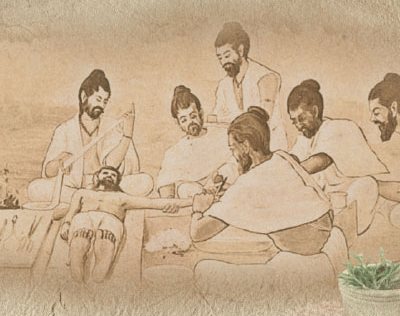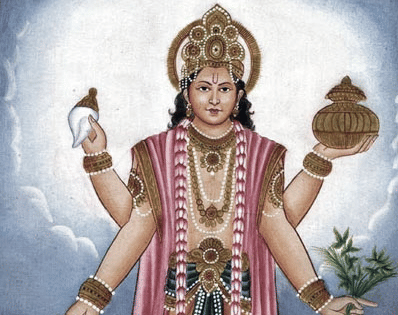

History of Ayurveda
Ayurveda is the oldest surviving complete medical system in the world. Derived from its ancient Sanskrit roots - ‘Ayus' (Life) and ‘Ved' (Knowledge) – and offering a rich, comprehensive outlook to a healthy life, its origins go back nearly 5,000 years. When it was expounded and practised by the same spiritual Rishis who laid the foundations of the Vedic civilisation in India, by organising the fundamentals of life into proper systems.

The art of Ayurveda had spread around in the 6th century BC to Tibet, China, Mongolia, Korea, and Sri Lanka, carried over by the Buddhist monks travelling to those lands. Although not much of it survives in original form, its effects can be seen in the various new-age concepts that have originated from there. No philosophy has had greater influence on Ayurveda than Sankhaya’s philosophy of creation and manifestation. This professes that behind all creation there is a state of pure existence or awareness, which is beyond time and space, has no beginning or end, and no qualities. Within pure existence, there arises a desire to experience itself, which results in disequilibrium and causes the manifestation of the primordial physical energy. And the two unite to make the 'dance of creation' come alive.
Imponderable, indescribable, and extremely subtle, this primordial energy, which and all that flows from it, existing only in pure existence, is the creative force of all action, a source of form that has qualities. Matter and energy are so closely related that when energy takes form, we tend to think of it in terms of matter only. And much modified, it ultimately leads to the manifestation of our familiar mental and physical worlds.
It also gives rise to cosmic consciousness, which is the universal order that pervades all life. Individual intelligence, as distinct from the everyday intellectual mind, is derived from, and is part of this consciousness. It is the inner wisdom, the part of individuality that remains unswayed by the demands of daily life, or by Ahamkara, the sense of `I-ness’.
A Sanskrit word with no exact translation, Ahamkara, is a concept not quite understood by everyone, as it is often misleadingly equated to `ego’. Embracing much more than just that, it is in essence that part of ‘me’ which knows which parts of the universal creation are ‘me’. Since ‘I’ am not separate from the universal consciousness, but 'I’ have an identity that differentiates and defines the boundaries of `me’. All creations, therefore, have Ahamkara, not just human beings.
There arises from Ahamkara a two-fold creation. The first is Satwa, the subjective world, which is able to perceive, and manipulate matter. It comprises the subtle body (The mind), the capacity of the 5 sense organs to hear, feel, see, taste, and smell, and for the 5 organs of action to speak, grasp, move, procreate, and excrete. The mind and the subtle organs provide the bridge between the body, the Ahamkara and the inner wisdom, which 3 together are considered the essential nature of humans.
The second is Tamas, the objective world of the 5 elements of sound, touch, vision, taste, and smell – the 5 subtle elements that give rise to the dense elements of ether or space, air, fire, water, and the earth – from which all matter of the physical world is derived. And it is Rajas, the force or the energy of movement, which brings together parts of these 2 worlds.
| Dense Element | Subtle Element | Sense Organ | Motor Organ | Function |
|---|---|---|---|---|
| Space | Sound | Ears | Vocal Chords | Speaking |
| Hair | Touch | Skin | Hands | Grasping |
| Fire | Sight | Eyes | Feet | Moving |
| Water | Taste | Tounge | Genitals | Procreating |
| Earth | Smell | Nose | Anus | Excreting |
Buffet Timings
Breakfast: 7:00 AM - 10:30 AM
Lunch: 12:00 PM - 3:30 PM
Dinner: 8:00 PM - 10:30 PM

Lorem ipsum dolor sit amet, consectetur adipiscing elit

Lorem ipsum dolor sit amet, consectetur adipiscing elit

Lorem ipsum dolor sit amet, consectetur adipiscing elit

Lorem ipsum dolor sit amet, consectetur adipiscing elit
It is worth noting that even at the stage of the dense elements, the philosophy of creation, which, according to Sankaya, is now and in the present, without any past and any future, is still dealing with aspects of existence beyond our simple physical realms. The point of contention is that we are the first and foremost spirit experiencing existence. To use Ayurveda in daily life, one neither accepts nor understands this philosophy. But it does provide a deeper insight into how Ayurveda works towards the betterment of your health.
Ayurveda, therefore, is not simply a health care system but a form of lifestyle adopted to maintain perfect balance and harmony within human existence, from the most abstract transcendental values to the most concrete physiological expressions. Based on the premise that life represents an intelligent coordination of the Atma (Soul), Mana (Mind), Indriya (Senses) and Sharira (Body).

Ayurveda is founded on the belief that every individual is made up of 5 fundamental elements that shape their unique constitution, known as Prakriti. This constitution is determined by the vital balance of three physical energies—Vata, Pitta, and Kapha—and 3 mental energies—Satwa, Rajas, and Tamas. Ayurveda thus offers a unique blend of science and philosophy that harmonises the physical, mental, emotional, and spiritual aspects essential for holistic wellbeing.
Newsletter Sign-up
Subscribe to our newsletter! Receive updates on the latest news and offers.